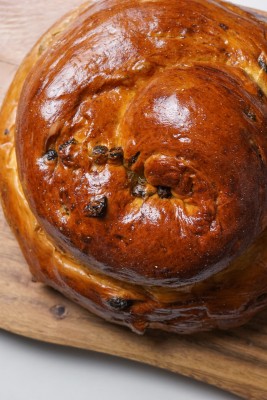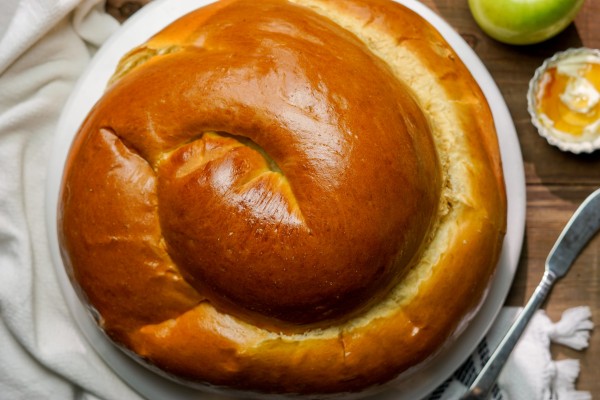
Raisin Challah Bread Details
Ingredients
Organic wheat flour (organic flour, malted barley), water, golden raisins (raisin, sulphur dioxide), raisins (raisins, sunflower oil), egg yolk, honey, corn oil, rum, sea salt, yeast, eggs
Contains: Wheat, Egg
Shelf life & storage
The bread will ship with two business day shipping to ensure it arrives as fresh and delicious as possible. Once it arrives, the bread will last on the counter for a few days. It does not need to be refrigerated – in fact, we recommend you avoid the fridge!
Challah is best enjoyed fresh, so we do not recommend that you freeze this bread.

The story behind our Rosh Hashanah challahs
Zingerman’s Bakehouse has been making challah for more than a quarter of a century. Each September we break out these special edition loaves for Rosh Hashanah, the Jewish New Year.
These once-a-year- challahs make any gathering special, regardless of your religion or traditions. Gather round the table, break bread and celebrate all life has brought you and what’s to come. We hope each loaf will bring a deliriously sweet and complete new year to you and yours.
What does round challah represent?
It became traditional among Eastern European Jews to bake challah in round, turban-like loaves. The shape is said to signify the desire for a full, complete year. It’s also made richer and sweeter than plain challah, part of an annual effort by Jewish cooks to bring home a better, sweeter, more fruitful year. Towards that end, bakers add more honey, raisins, additional eggs, and liqueurs – sometimes even saffron. We add a generous portion of extra large Red Flame raisins that we first soak in ultra-rich Myers’ Dark Rum before folding into the dough.
Why is some challah braided?
The Moroccan Jewish community developed another special holiday challah called “Pain Petri.” It’s a beautiful, five-braided loaf whose shape is meant to symbolize the ascent to heaven. Sensually spicy, it’s a rich, egg-based dough sweetened with honey and rolled in magnanimous amounts of anise, poppy, and sesame seeds. To some, the seeds represent the manna that fell from heaven while the Israelites wandered the desert after the Exodus from Egypt.